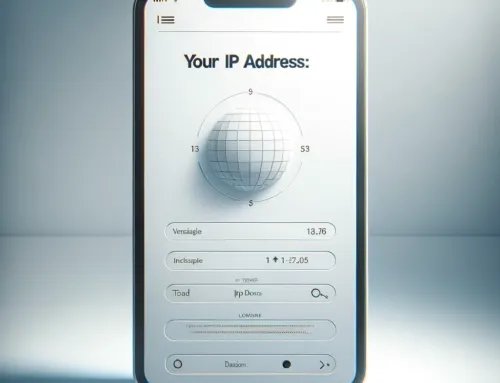
FAQ: What are the most concerning cyberthreats right now 2024?
FAQ
Approx read time: 4.2 min.
As of early 2024, the landscape of cyberthreats continues to evolve, with several significant threats posing considerable risks. Here are some of the most concerning cyberthreat’s now:
-
Ransomware Attacks: Ransomware remains a major threat, with attackers constantly evolving their tactics. These attacks involve encrypting a victim’s data and demanding payment for its release. They target both large organizations and individual users.
-
Example: Ransomware Attacks:
-
Case Example: The WannaCry ransomware attack in 2017. It affected hundreds of thousands of computers across 150 countries, targeting systems running Microsoft Windows. It exploited a vulnerability in older Windows systems to encrypt data, demanding ransom payments in Bitcoin.
-
-
-
Phishing Scams: Phishing attacks, where cybercriminals use deceptive emails or messages to trick individuals into revealing sensitive information, continue to be prevalent. These scams are becoming more sophisticated, often using social engineering to appear more convincing.
-
Example: Phishing Scams:
-
Case Example: The 2016 phishing attack on John Podesta, the chairman of Hillary Clinton’s presidential campaign. Podesta received a deceptive email, apparently from Google, urging him to change his password. This led to the leak of numerous private emails.
-
-
-
Supply Chain Attacks: Attackers are increasingly targeting the supply chains of large organizations. By compromising one part of the supply chain, they can gain access to the data or systems of multiple companies.
-
Supply Chain Attacks:
-
Case Example: The SolarWinds attack discovered in 2020. Malicious actors compromised the infrastructure of SolarWinds, a company that produces software for managing and monitoring computer networks. This allowed the attackers to potentially access thousands of SolarWinds’ customers.
-
-
-
Advanced Persistent Threats (APTs): These are prolonged and targeted cyberattacks in which an intruder gains access to a network and remains undetected for a long period. APTs are often state-sponsored or executed by highly organized criminal groups.
-
Example: Advanced Persistent Threats (APTs):
-
Case Example: The Stuxnet worm, discovered in 2010, targeted supervisory control and data acquisition (SCADA) systems and was believed to be designed to damage Iran’s nuclear program. It’s one of the most sophisticated APTs known.
-
-
-
IoT Vulnerabilities: As the Internet of Things (IoT) expands, so do the potential vulnerabilities. Many IoT devices lack robust security, making them easy targets for cybercriminals looking to infiltrate networks.
-
Example: IoT Vulnerabilities:
-
Case Example: The Mirai botnet in 2016. It infected IoT devices such as IP cameras and home routers, turning them into a network of bots that was used to conduct large-scale network attacks, including the notable disruption of major websites.
-
-
-
AI-Powered Attacks: There’s a growing concern about the use of artificial intelligence by attackers to automate and enhance their attacks, making them more effective and harder to detect.
-
Example: AI-Powered Attacks:
-
While specific publicly known cases are rare due to the emerging nature of this threat, there have been instances where AI has been used to create more convincing phishing emails or to automate attack strategies.
-
-
-
Zero-Day Exploits: These are attacks that take advantage of previously unknown vulnerabilities in software or hardware. They are particularly dangerous because there’s no existing defense against them until the vulnerability is discovered and patched.
-
Example: Zero-Day Exploits:
-
Case Example: The 2021 Microsoft Exchange Server hack. Attackers used several zero-day vulnerabilities to access email accounts and install malware for further long-term access to victims’ environments.
-
-
-
Cloud Security Threats: With more data and services moving to the cloud, cloud services have become a tempting target for attackers. Misconfigurations and weak security practices in cloud environments can lead to data breaches.
-
Example: Cloud Security Threats:
-
Case Example: The Capital One data breach in 2019. A former Amazon Web Services employee exploited a misconfigured web application firewall to access the data of over 100 million Capital One customers.
-
-
-
Deepfakes and Disinformation: The use of AI-generated fake content (deep fakes) to create convincing but false information can be used for everything from discrediting individuals to influencing political events.
-
Example: Deepfakes and Disinformation:
-
While there are many instances of deep fakes, a notable case is their use in creating fake pornography videos of celebrities. These instances highlight the potential for harm and the spreading of disinformation.
-
-
-
Mobile Device Vulnerabilities: With the increased reliance on smartphones and tablets for professional and personal use, these devices have become prime targets for cyberattacks.
-
Example: Mobile Device Vulnerabilities:
-
Case Example: The Pegasus spyware, developed by the Israeli firm NSO Group, exploited vulnerabilities in mobile phone operating systems to remotely access and surveil targeted smartphones.
-
-
Staying informed about these threats and adopting best practices in cybersecurity can help mitigate the risks. This includes regular software updates, using strong, unique passwords, employing multi-factor authentication, being wary of unsolicited communications, and having a robust backup strategy. For organizations, continuous monitoring, employee training, and a proactive cybersecurity strategy are essential to defend against these evolving threats.
Related Posts:
Top Tools for Ethical hacking in 2024(Opens in a new browser tab)
The Top 12 Healthcare Industry Cyber Attacks(Opens in a new browser tab)
What is Healthcare Cybersecurity in organizations?(Opens in a new browser tab)
Only 9% of companies warn employees about IoT risks(Opens in a new browser tab)








